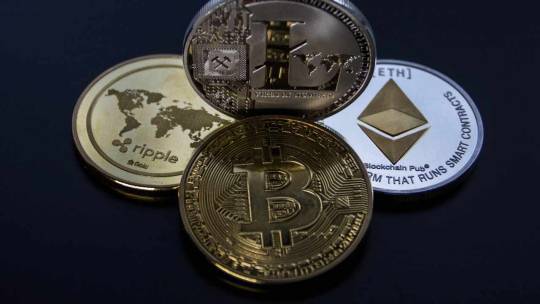Did Bitcoin prove itself to be a reliable store of value in 2020? Experts answer

Without any doubt, the year 2020 was unlike any other year in the 21st century: The ongoing COVID-19 pandemic, global governments unstoppably printing money, “lockdowns” and “social distancing” becoming the new normal, protests against racial discrimination and police brutality, and so on and so forth. It even made some claim it to be “the worst year ever.” But as they say: In every storm, each cloud has a silver lining. The most important thing is to learn from what we’ve been through and to improve our world and our future, as there are some problems that we have to solve ourselves.
It’s also true that 2020 was a significant, dramatic year not only for people all over the world but for Bitcoin (BTC) as well: the third halving, increased attention from institutional investors and global regulators, its white paper’s 12th anniversary, etc. Some even called it the “New Testament” of finance, and others suggested using it for the utopian idea of universal basic income. Bitcoin received global attention because of the Twitter hack in mid-July, which required the crypto community to defend Bitcoin’s integrity after the event placed the words “Bitcoin” and “scam” within one headline again. In October, PayPal announced it would offer crypto payments, and later in November, Bitcoin was on the homepage of the Wall Street Journal for its 80% price rally.
Related: Will PayPal’s crypto integration bring crypto to the masses? Experts answer
When 2020 started, it was hard to imagine how the world would change and how fast those changes would be. Despite all the negative impacts of the ongoing COVID-19 crisis, there have been some positive developments, at least within the crypto space. For instance, Bitcoin’s volatility has decreased since its peak in mid-March, and the pandemic has highlighted Bitcoin’s most important value: its decentralized nature. Some even argued that the pandemic has underlined the benefits of cryptocurrencies for the world. And while Europe experienced the shift to a cashless world, the United States remained more conservative and didn’t want to give up its paper money.
Related: How has the COVID-19 pandemic affected the crypto space? Experts answer
One thing became certain due to the effects of COVID-19: There are some serious problems with the currently existing financial system that might be solved by Bitcoin and by the technology behind it. And the similarities between the two recent financial crises — the first back in 2008 and now in 2020 due to the pandemic — revealed the systemic problems of centralized financial systems. While the first crisis gave birth to Bitcoin, the current one has made people turn to decentralized tech and Bitcoin on a massive scale amid the global economic recession. Some even argue that during the next decade, Bitcoin will play a crucial role in the global economy’s transformation, called “The Great Reset,” and that crypto mass adoption will be led by the millennial generation.
Central banks printed an estimated $15 trillion in stimulus by May alone as anti-pandemic measures to save global economies, throwing the U.S. dollar under the bus, as some said. And these measures turned people toward alternative financial tools, making Bitcoin a hedge against inflation and even an alternative to traditional finance entirely. Some even suggested governments make a monetary transition to Bitcoin to solve the national debt problems.
Another important 2020 milestone was the rise of institutional investors’ interest in Bitcoin. Although this trend seemed to be “built on nothing more than hope” earlier this year, 2020 surprised everyone here as well. Forced by the possibility of rising inflation, the hedging abilities of Bitcoin couldn’t go unnoticed by high-profile investors who saw crypto as an important part of a diversified corporate treasury holding, becoming major holders of digital assets this year.
Unsurprisingly, the crypto space has started to consider the rise of Bitcoin mining institutions inevitable. Also, China’s dominance over the world’s Bitcoin mining operations seemed to be challenged. And most importantly, the future of crypto mining will become more sustainable.
With the 2020 shift in public discourse around Bitcoin, it’s becoming more and more important to create a regulatory framework for the crypto space, without which it will have no future. The regulation, some argue, has to be evolutionary rather than revolutionary, and most importantly, it requires dialogue and close collaboration between regulators and crypto businesses.
All in all, it is hard to predict the crypto’s future in the post-COVID-19 world, as the pandemic has not yet come to an end. Meanwhile, it is impossible to neglect the impact it has had on the crypto space this year. The new Bitcoin era, after everything that happened this year, is forming the new financial order. And if fiat money might lose up to 90% in 100 years, Bitcoin’s future seems to be much brighter than it is now, considering that Bitcoin just reached $27,000 for the first time in history and is now targeting $100,000 within the next 12 months and $500,000 within the decade. And with 2020 coming to its end, Cointelegraph reached out to experts in the blockchain and crypto space for their opinions on Bitcoin’s path this year.
Did Bitcoin mature enough this year to become a reliable store of value? Why or why not?

Brian Brooks, acting comptroller of the currency of the U.S. Treasury Department’s Office of the Comptroller of the Currency:
“We hope that our July 2020 letter regarding crypto custody will make Bitcoin safer for institutional and retail holders. Bitcoin was the innovation that opened the door to decentralizing financial services, and the growth of it and other tokens in 2020 shows the beginning of a transformation of cryptocurrencies from an exotic concept to a more familiar and comfortable means of engaging in financial services.”

Da Hongfei, founder of Neo, founder and CEO of Onchain:
“Since its inception, Bitcoin has witnessed and survived various ups and downs, and it now appears that investors, on the whole, are increasingly more confident in its value. More significantly, I believe that this signals how quickly we are moving toward mainstream adoption.
Throughout 2020, the blockchain space experienced an explosion in terms of interest and creativity, and we’re seeing the results now: More and more people are recognizing that blockchain is here, and it is here to say.
Moving forward, I believe we’re on the cusp of mainstream adoption, and I’m very excited for what 2021 will bring.”

Denelle Dixon, CEO and executive director of the Stellar Development Foundation:
“I think that the institutional focus on Bitcoin has created positive momentum for the entire blockchain space. Personally, I think it is a reliable store of value. As is much debated throughout crypto circles and beyond, engagement with the network in the long term may present challenges and affect Bitcoin’s ability to translate to certain business applications and use cases, but I believe that storing value and holding value are irrefutably its strengths.”

Emin Gün Sirer, CEO of AvaLabs, professor at Cornell University, co-director of IC3:
“We’ve seen over time how narratives around cryptocurrencies can shift and evolve to fit market demand or a network’s capabilities. The Bitcoin narrative around store of value and hedge against currency inflation has hardened this year, and I believe it’s now the dominant positioning for BTC, as its most vocal supporters and institutional adopters have rallied around it.
That’s a perfectly fine position for Bitcoin to occupy.
Personally, I’m most excited about currencies that have both a scarce, hard-capped supply like Bitcoin but also push for more sophisticated utility with functionalities like smart contracts, DeFi applications and asset issuance.”

Heath Tarbert, chairman and chief executive of the U.S. Commodity Futures Trading Commission:
“We have definitely seen an increase in digital assets overall. Bitcoin is among that market, but let us not forget about Ether, which I declared a commodity last year. The two of these together represent a large portion of the crypto market. And it has been an interesting year in this market — not just with the halving but also the move to Ethereum 2.0 and both Bitcoin and Ether forking.
Despite this, however, we must still recognize that this market is small compared with other assets we regulate. I think over time, this market will be comparable. Until then, however, there will need to be more regulatory clarity around these digital assets for these markets to grow.”

James Butterfill, investment strategist at CoinShares:
“Bitcoin remains a volatile asset. Many expect a store of value to have much lower volatility, but as gold was developing into an investment store of value in the 1970s, it too had extremely high volatility. As it has matured as a store of value, so too has its volatility declined. We expect the same to happen to Bitcoin, and early evidence alludes to this.
2020 has been crucial for Bitcoin. We see it as the year of legitimization for the broader public and investors, fortuitously aided/accelerated by the COVID-19 crisis and the consequent rapid escalation of quantitative easing and fall in use of cash. Our conversations with institutional clients have changed considerably over the course of 2020. What was typically a desire to speculatively invest has now become one of being fearful of extreme loose monetary policy and negative interest rates, with clients looking for an anchor for their investments. As their understanding of Bitcoin improves, clients have grasped that Bitcoin has a limited supply and fulfills this role as an anchor for their assets while fiat is being debased.
This year, we have seen cumulative flows (stripping out the price effect) into investment products rise from $1.35 billion at the start of the year to $6.1 billion today, with only 24 days of outflows for a total of 241 trading days this year. Investors are buying and holding — a good indicator that it is slowly developing into a store of value.”

Jimmy Song, instructor at Programming Blockchain:
“It’s not that Bitcoin has matured, it’s that we have. The mainstream investors are starting to take notice of Bitcoin’s 12-year history and starting to recognize how valuable it really is in a world of near-infinite quantitative easing. Bitcoin gives us true scarcity, and that’s why it’s useful as a store of value. Literally, nothing like this has existed in human history.”

Joseph Lubin, co-founder of Ethereum, founder of ConsenSys:
“Despite this very difficult year, I think that the broader decentralized protocol ecosystem demonstrated poignantly that we, like our Web 3.0 technology, are anti-fragile and that this technology will prove a worthy evolutionary successor to Web 2.0 systems. We continue to demonstrate that this technology will serve as a new trust foundation for next-generation, increasingly decentralized, financial, economic, social and political systems.”

Michael Terpin, founder of Transform Group and BitAngels:
“Store of value is an interesting concept. It doesn’t mean nonvolatile; after all, both gold and real estate have had their cycles, booms and busts, but to date, they have returned to a reliable mean so that there are very few instances where a 20-year investment in either did not perform as a reliable way of keeping ahead of inflation with very low risk of losing one’s principal.
To skeptics, Bitcoin was seen as the equivalent of investing in a single high-risk stock that could easily crash to zero — and in its early days, this certainly was possible. But no asset in history has ever gone from under one cent, as it was during the first P2P transactions, to this month’s high-water mark of $28,300. As each year has passed, the fluctuations have gotten more manageable — there will be no more 100-times gains in one year, as happened in 2013. This plus the clear signals from the United States, the European Union, China and Japan that they’re happy to cope with both the ongoing COVID-19 pandemic and economic depression through massive money printing means that these currencies will vastly underperform hard assets in the next two to three years as the money supply in these nations expands at annual rates of above 20% instead of the historic 4% to 5%, which is near the true rate of inflation.
Barry Silbert primed the pump with Grayscale, allowing accredited investors an easy way to invest in Bitcoin that then makes its way into a publicly traded vehicle. Paul Tudor Jones, who made a fortune calling the gold boom in the 1980s, awoke the multitrillion-dollar institutional fund world by having his funds invest in Bitcoin, calling it ‘the fastest horse’ in the race.
Michael Saylor, CEO and founder of multibillion-dollar public firm MicroStrategy, then lit the fuse on corporate fear and greed by using 80% of its $500 million in cash earlier this year to invest in Bitcoin, which has now more than doubled. More recently, he went even further and issued debt to buy even more Bitcoin.
Bitcoin has never been great at microtransactions — dozens of low-fee, faster-settling cryptos are far better at this — but it needed to go through this use case in its infancy. Its true value now is in sending large transactions instantly and safely, and as a store of value for the next century and beyond.”

Mike Belshe, CEO of BitGo:
“The 2020 bull run of Bitcoin is very different from anything we’ve seen before. Unlike the previous rapid rise of 2017, this year saw the influx of new large institutional players. New entrants like PayPal, Square, JPMorgan and others are bringing a new level of credibility, liquidity and stability to the crypto markets.
Institutions and retail investors are recognizing the importance of the principle of scarcity, which is the basic economic principle of Bitcoin. With governments overprinting money across the globe, Bitcoin is the most reliable store of value at this time and a hedge against inflation. Those who understand this will be in a stronger economic position than those who don’t.
I agree with Paul Tudor Jones’ recommendation that individuals who have investable assets put a small amount, perhaps 2%, into Bitcoin. And I’d go a step further and say that institutions should invest 5% of their corporate treasuries in order to stay competitive. Investing small amounts can produce tremendous upside with minimal downside risk.”

Paul Brody, principal and global innovation leader of blockchain technology at Ernst & Young:
“Bitcoin has reached that mature, stable store-of-value stage, but I fear it will never be without some controversy. While the Ethereum ecosystem is becoming a vibrant economic entity — with DeFi, smart contracts and infrastructure services being built atop the system — Bitcoin remains very focused on taking a role as a store of value. This will make it hard for some people to grasp, in the same way that many people still don’t quite realize that there is no gold or other asset that backs any other modern currency either. ”

Roger Ver, executive chairman of Bitcoin.com:
“Clearly not. Anything that can fluctuate from $4,000 to $20,000 in a single year is anything but a store of value. It is still just a speculative investment at this point.”

Samson Mow, chief strategy officer of Blockstream:
“Bitcoin was always a reliable store of value. The only people that say otherwise are the ones looking at it on very short time horizons. As public market companies like MicroStrategy have recently realized, Bitcoin is the only safe haven to store value — cash will just melt away from inflation and quantitative easing, gold is stagnant, and tech stocks are overextended. Now, we’re seeing giants like Guggenheim Partners and Ruffer pile in as they come to that same realization as well. Hyperbitcoinization is inevitable.”

Serguei Popov, co-founder of the Iota Foundation:
“Bitcoin and other popular cryptocurrencies have been a store of value for many people for quite some time already. The considerable capitalization of the crypto market corroborates this, and it’s likely that quite a few readers of this article are using cryptos in this way already. Whether it is ‘reliable’ or not depends on the definition of reliability. Of course, it is true that Bitcoin’s — let alone other cryptos’ — price is quite volatile and will probably remain so, meaning anyone who uses it for a store of value might experience some strong emotions. On the other hand, it is very reliable in the sense that nobody can take your Bitcoin away, as long as you keep your private keys secret and store them safely. This constitutes a unique advantage of cryptocurrencies in the store-of-value context.”

Todd Morakis, co-founder and partner of JST Capital:
“The institutions are here. This year, we’ve seen a number of large traditional firms either announce or begin to explore Bitcoin. While custody is still challenging for institutions, the Paul Tudor Jones announcement earlier in the year as well as the improvement of institutional Bitcoin solutions have led to much broader acceptance of Bitcoin within the traditional financial community. Bitcoin is no longer a bad word on the street.”

Vinny Lingham, CEO of Civic:
“Bitcoin is a speculative investment. Even if we see the price goes up, we have to remember that it’s still speculative. When will it become a reliable store of value? As I’ve been saying for years, Bitcoin may eventually evolve into a reliable store of value, but this growth process will take at least five to 10 years. We’ll know that we’ve reached the goal when Bitcoin becomes far more stable and far less volatile — in a word, boring.”
These quotes have been edited and condensed.
This article does not contain investment advice or recommendations. Every investment and trading move involves risk, and readers should conduct their own research when making a decision.
Title: Did Bitcoin prove itself to be a reliable store of value in 2020? Experts answer
Sourced From: cointelegraph.com/news/did-bitcoin-prove-itself-to-be-a-reliable-store-of-value-in-2020-experts-answer
Published Date: Thu, 31 Dec 2020 18:47:00 +0000
Did Bitcoin prove itself to be a reliable store of value in 2020? Experts answer
Did Bitcoin prove itself to be a reliable store of value in 2020? Experts answer was originally published here https://dailynwssheet.tumblr.com/post/639058854279331840









